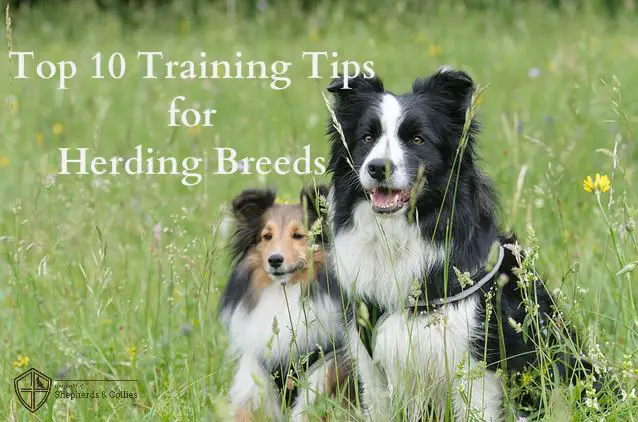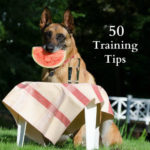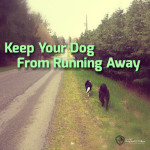Top 10 Important Training Tips for Herding Breed Dogs
10 Important Training Tips for Your Herder
If you have a herding breed dog, here are ten important training tips for you:
- Never allow your puppy or dog to chase smaller animals uncontrolled – this can lead to the dog learning ill behaviours when he or she is grown up, which can be hard to break.
- Never leave a herder alone for long periods of time. These dogs were meant to work with their human for the majority of the day, so it’s torture for them to be left alone for long periods of time.
- If you don’t work them, they’ll find their own work – every herder needs a job. Try giving them a job to do “everyday”, such as: bringing in the newspaper, helping collect dirty laundry, picking up their own toys, keeping the cats in check, etc. Just something that is uniquely theirs to do. If you don’t give them a job, they will make their own, which is usually a really horrible job such as digging or barking.
- Talk to them in different tones to communicate what you like and don’t. In herding, we make a quick noise to speed the dog up, and a low steady tone to slow them down.
- Herders are incredibly easy to train, but hard to KEEP trained. By brushing up on your training regularly, it will increase their listening skills and keep them sharp.
- If they’re herding something, go with it! You cannot STOP a herder from herding other animals, but you can control it. Use the Premack Principle that I go over in Herding Behavior: How to Control the Out of Control.
- Handling. Herding breeds are very go-go-go, especially when they’re pups, so handling training is of the utmost importance both then and now. This habituates your dog to being handled at all times and in all different ways, which will keep a more tolerant dog in the long run. To condition your dog to being handled, watch my video Dog Training - Building Tolerance to Handling.
- Over exercising can be deadly for your dog and it’s often overlooked. Watch your dog’s breathing and small signals that tells you the dog is wanting a break. Keep in mind, though, may not be able to stop themselves (dropping the ball or object, laying down for a moment, eating grass, sniffing, slowing down). Especially in the heat, cut down your exercise regimes by half OR offer a body of water to quickly cool down and hydrate.
- Off switch. This one is incredibly important for your dog to learn. This cue, where you say “all done” or “that’ll do”, means we are done and there is no more, you need to STOP. Being consistent with this cue will help your dog stop and calm down.
- Impulse control training is incredibly important for all dog breeds; this trains the brain to get excited and calm down quickly. If your dog doesn’t have good impulse control, you will find training them in any distracting situation almost impossible. Please watch these two videos to help train impulse control: Impulse Control Game for Dogs and Increase Your Dog's Self Control, Listening Skills & Mental Stimulation - 5 Exercises to Play.
Article By:
Kris Crestejo, CDBC
Meet Our Evangelist








